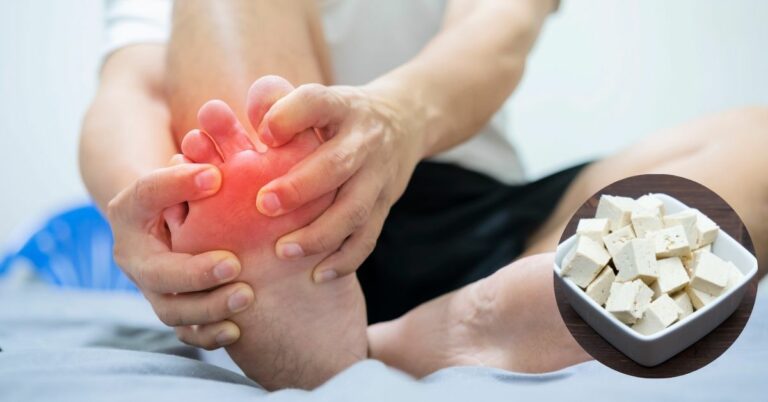Carpal tunnel syndrome affects millions worldwide with numbness, tingling, and pain in the hand, but two conditions frequently receive incorrect carpal tunnel diagnoses due to similar symptoms. Cubital tunnel syndrome (ulnar nerve entrapment at the elbow) and cervical radiculopathy (nerve compression in the neck) both produce hand symptoms that confuse healthcare providers and delay proper treatment. This two conditions often misdiagnosed as carpal tunnel syndrome a medical guide examines these commonly misdiagnosed conditions, their distinguishing features, and why accurate diagnosis matters for effective treatment.
Understanding Carpal Tunnel Syndrome
Carpal tunnel syndrome occurs when the median nerve compresses as it passes through the wrist’s carpal tunnel. Typical symptoms include numbness and tingling in the thumb, index, middle, and thumb-side of the ring finger, often with night pain that improves with hand shaking. Key diagnostic tests include nerve conduction studies, Phalen’s test (wrist flexion), and Tinel’s sign (wrist percussion).
 Many people suffer from carpal tunnel syndrome
Many people suffer from carpal tunnel syndrome
Condition #1: Cubital Tunnel Syndrome
Cubital tunnel syndrome develops when the ulnar nerve compresses at the elbow, making it the second most common nerve entrapment after carpal tunnel syndrome. Unlike carpal tunnel, this condition affects the little finger and ulnar half of the ring finger, often causing pain along the inner elbow and forearm.
Key Differences from Carpal Tunnel:
- Location: Affects little and ring fingers vs. thumb side
- Pain source: Elbow vs. wrist
- Triggers: Elbow flexion vs. wrist flexion
- Night symptoms: Less common than carpal tunnel
Diagnostic Tests:
- Elbow flexion test (60-second elbow bending)
- Tinel’s sign at the elbow
- Nerve conduction studies of ulnar nerve
- Froment’s sign (thumb strength testing)
Condition #2: Cervical Radiculopathy
Cervical radiculopathy occurs when neck nerve roots compress due to disc herniation, bone spurs, or spinal stenosis. This condition can perfectly mimic carpal tunnel syndrome when C6 or C7 nerve roots are affected, as these contribute to hand sensation.
Distinguishing Features:
- Associated symptoms: Neck pain and stiffness
- Pain pattern: May extend above the elbow
- Aggravating factors: Neck movement vs. wrist activity
- Relief patterns: Shoulder elevation may help
Diagnostic Evaluation:
- Spurling’s test (neck extension with compression)
- MRI of cervical spine
- EMG/nerve conduction studies
- Shoulder abduction relief sign
Diagnostic Comparison
| Feature | Carpal Tunnel | Cubital Tunnel | Cervical Radiculopathy |
|---|---|---|---|
| Finger involvement | Thumb, index, middle | Little, ring (ulnar half) | Variable by nerve root |
| Night symptoms | Common | Less common | Variable |
| Primary pain location | Wrist | Elbow | Neck/shoulder |
| Key test | Phalen’s test | Elbow flexion test | Spurling’s test |
Treatment Implications
Misdiagnosis leads to inappropriate treatment and poor outcomes. Each condition requires specific management:
Conservative Treatment:
- Carpal tunnel: Wrist splinting, ergonomic modifications
- Cubital tunnel: Elbow padding, avoiding flexion
- Cervical radiculopathy: Physical therapy, posture correction
Surgical Options:
- Carpal tunnel: Carpal tunnel release
- Cubital tunnel: Nerve decompression or transposition
- Cervical radiculopathy: Discectomy, fusion, or disc replacement
Red Flags Requiring Medical Attention
Patients should seek immediate evaluation for:
- Progressive muscle weakness
- Severe pain disrupting sleep
- Numbness affecting daily functions
- Symptoms spreading to new areas
- Failed response to conservative treatment
Prevention Strategies
Workplace ergonomics and lifestyle modifications help prevent these conditions:
- Maintain neutral wrist and neck positions
- Take regular breaks from repetitive activities
- Use ergonomic equipment and proper workstation setup
- Strengthen neck and forearm muscles
- Address underlying health conditions like diabetes
Conclusion
Distinguishing between carpal tunnel syndrome, cubital tunnel syndrome, and cervical radiculopathy requires careful attention to symptom distribution and comprehensive clinical evaluation. Healthcare providers must recognize these diagnostic challenges and employ systematic approaches including detailed history, thorough examination, and appropriate testing. Patients experiencing persistent hand symptoms should seek evaluation from qualified professionals who understand these conditions’ subtle differences. Early accurate diagnosis and targeted treatment significantly improve outcomes and prevent complications from mismanaged nerve compression syndromes. The key lies in recognizing that similar hand symptoms can originate from different anatomical locations, requiring precise diagnosis for optimal patient care.
Related Questions Regarding Conditions Often Misdiagnosed as Carpal Tunnel Syndrome
1. What are the two conditions most commonly misdiagnosed as carpal tunnel syndrome?
The two conditions often misdiagnosed as carpal tunnel syndrome (CTS) are tendonitis and rheumatoid arthritis (or other types of arthritis such as osteoarthritis). Additionally, conditions like ulnar tunnel syndrome and cervical radiculopathy can also be mistaken for CTS.
2. Why are tendonitis and rheumatoid arthritis frequently confused with carpal tunnel syndrome?
-
Tendonitis and CTS both involve repetitive wrist movements leading to pain, numbness, and weakness in the hand, causing similar symptoms.
-
Rheumatoid arthritis causes joint inflammation, pain, swelling, and stiffness in the wrist and hand, which can mimic the numbness and weakness seen in CTS. However, rheumatoid arthritis is an autoimmune disease primarily affecting joints, while CTS is caused by median nerve compression.
 Distinguish between carpal tunnel syndrome and other syndromes to have appropriate treatment regimen
Distinguish between carpal tunnel syndrome and other syndromes to have appropriate treatment regimen
3. How can one differentiate carpal tunnel syndrome from tendonitis or rheumatoid arthritis?
-
Symptom location: CTS typically causes numbness and pain in the thumb, index, middle finger, and part of the ring finger but spares the little finger. Arthritis often affects all fingers and causes visible joint swelling.
-
Symptom timing: CTS symptoms often worsen at night; arthritis symptoms do not have this pattern.
-
Response to movement: Shaking the hand often relieves CTS symptoms but does not help arthritis pain.
-
Pain location in tendonitis: Tendonitis pain is usually on the back of the wrist or along the tendons, unlike CTS, which causes pain on the palm side.
4. What other conditions can be mistaken for carpal tunnel syndrome?
Besides tendonitis and arthritis, CTS can be confused with:
-
Ulnar tunnel syndrome, causing numbness in the little finger and part of the ring finger.
-
Cervical radiculopathy, where nerve root compression in the neck causes pain radiating down the arm.
-
Other nerve or ligament injuries in the wrist and forearm.
5. What are the consequences of misdiagnosing carpal tunnel syndrome?
Misdiagnosis can lead to inappropriate treatment, such as unnecessary surgery for CTS when the patient actually has tendonitis or arthritis. This can result in wasted time, increased pain, and no symptom improvement. Accurate diagnosis through careful examination and additional tests is essential to ensure proper treatment.
Scientific References
-
Cervical Radiculopathy
-
What it is: A pinched nerve root in the neck (often C6 or C7).
-
Why misdiagnosed: Causes radiating arm/hand symptoms mimicking CTS.
-
Key Differences: Pain often starts in the neck, worsens with neck movement. Weakness patterns can differ. Spurling’s test (neck compression) may be positive.
-
Source Example: Lo, S. F. (2022). Journal of Clinical Medicine, 11(9), 2387. This review highlights symptom overlap and the need for careful differentiation from CTS, sometimes finding both conditions present (“double crush”).
-
-
Pronator Teres Syndrome (PTS)
-
What it is: Median nerve compression in the proximal forearm (at the pronator teres muscle).
-
Why misdiagnosed: Causes pain, numbness, and tingling in a similar median nerve distribution as CTS.
-
Key Differences: Pain/tenderness in the proximal forearm, worsened by forceful forearm pronation (e.g., turning a screwdriver). CTS-specific wrist tests (Phalen’s, Tinel’s at wrist) are often negative. Typically lacks the night symptoms common in CTS. Sensation over the thenar eminence (base of thumb) might be affected (spared in CTS).
-
Source Example: Dididze, M., et al. (2023). “Pronator Teres Syndrome.” StatPearls. This resource describes PTS as an important, though less common, mimic of CTS. Lee, M. J., & LaStayo, P. C. (2004) in JOSPT also detail nerve compressions that mimic CTS, including PTS.
-
Kiểm Duyệt Nội Dung
More than 10 years of marketing communications experience in the medical and health field.
Successfully deployed marketing communication activities, content development and social networking channels for hospital partners, clinics, doctors and medical professionals across the country.
More than 6 years of experience in organizing and producing leading prestigious medical programs in Vietnam, in collaboration with Ho Chi Minh City Television (HTV). Typical programs include Nhật Ký Blouse Trắng, Bác Sĩ Nói Gì, Alo Bác Sĩ Nghe, Nhật Ký Hạnh Phúc, Vui Khỏe Cùng Con, Bác Sỹ Mẹ, v.v.
Comprehensive cooperation with hundreds of hospitals and clinics, thousands of doctors and medical experts to join hands in building a medical content and service platform on the Doctor Network application.



























